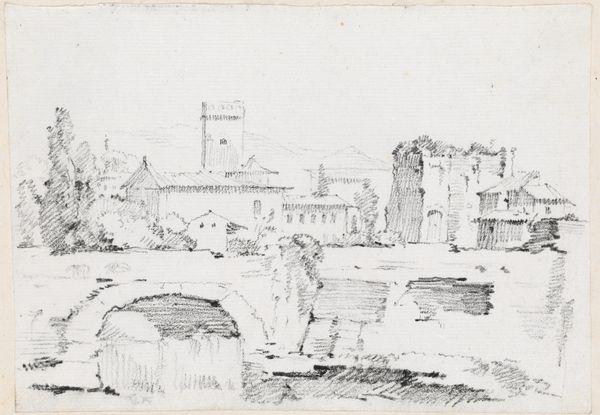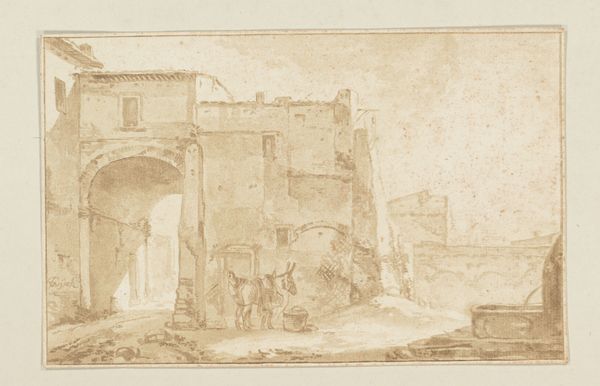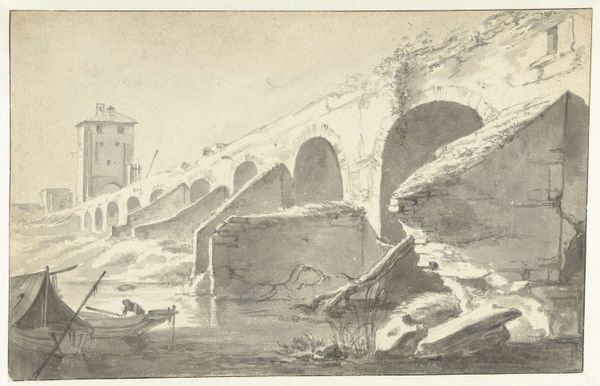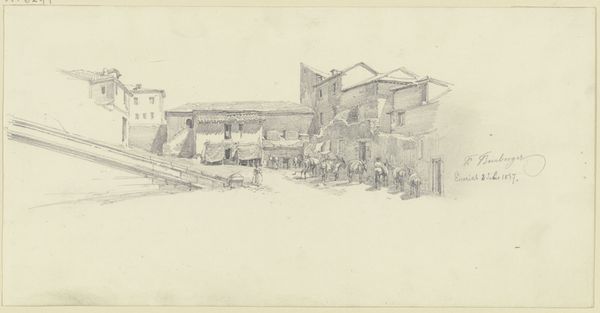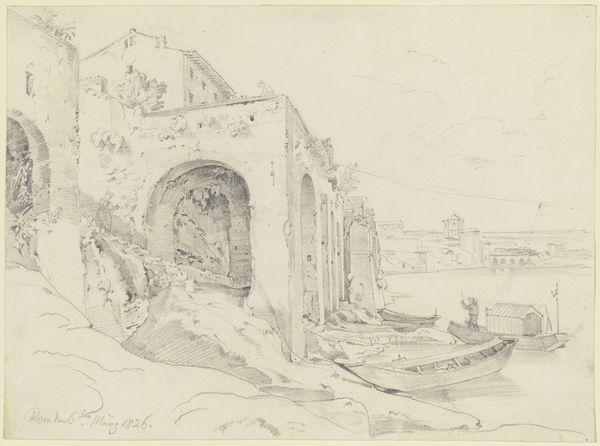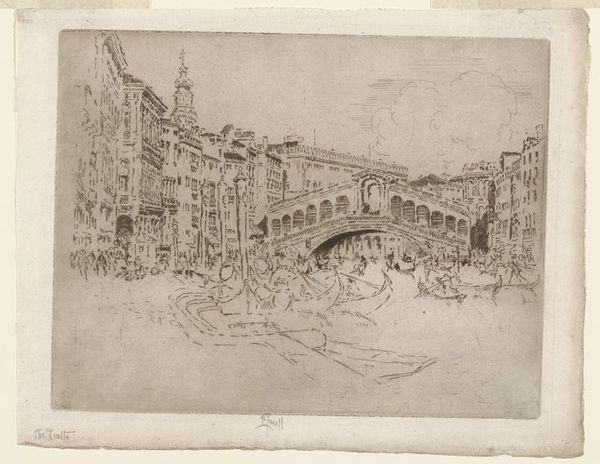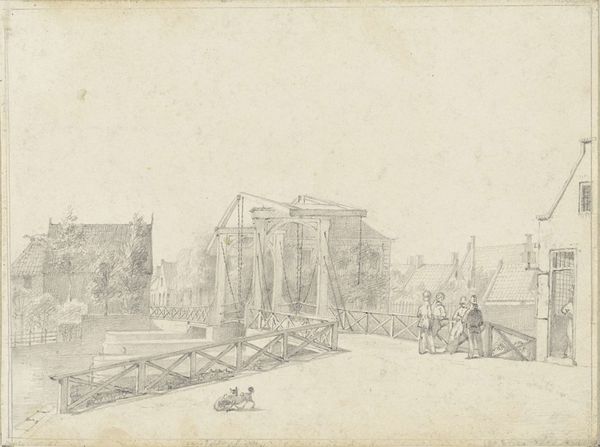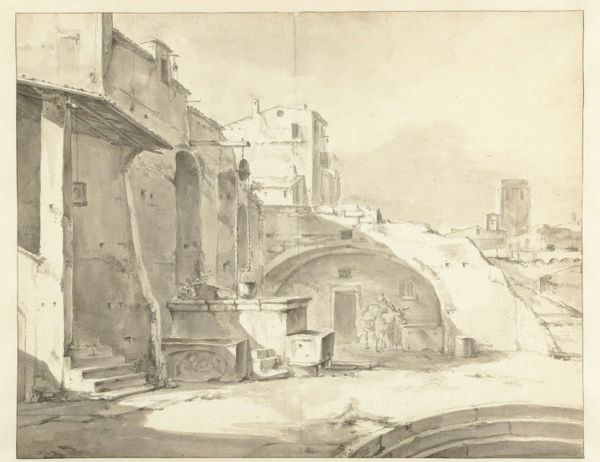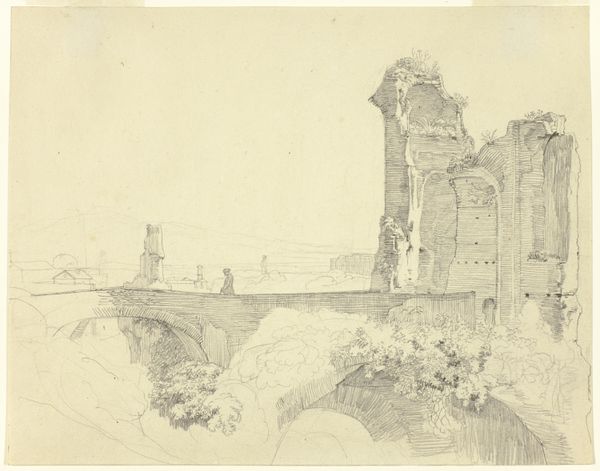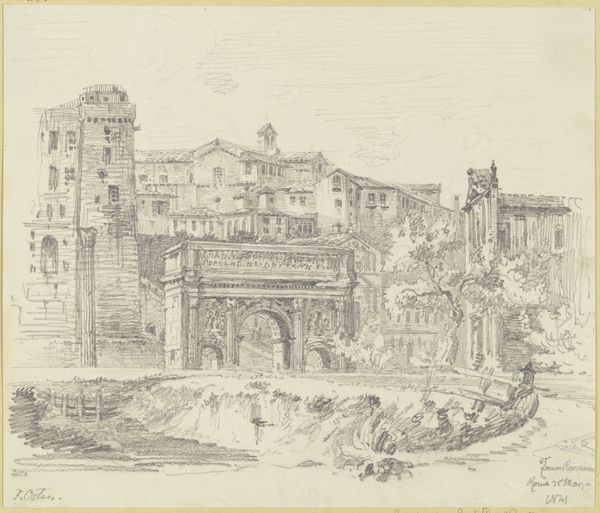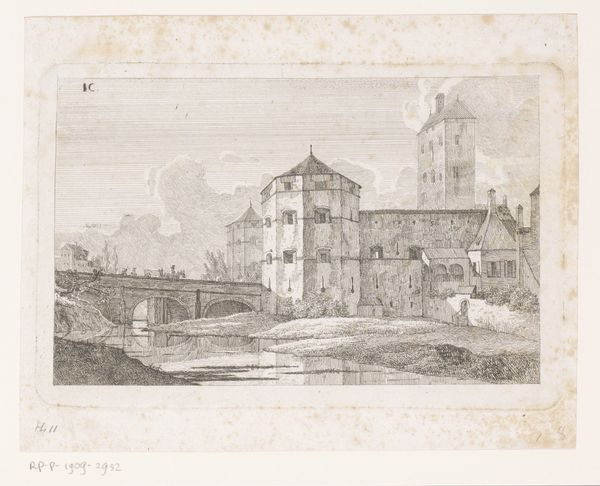
drawing, gouache, paper, ink, indian-ink, pencil, architecture
#
drawing
#
baroque
#
gouache
#
pencil sketch
#
landscape
#
etching
#
paper
#
ink
#
indian-ink
#
pencil
#
architecture
Copyright: Public Domain
Jan Both made this drawing of the Ponte Rotto in Rome, sometime in the mid-17th century, using pen and brown ink and wash over graphite. In it, we see not just a picturesque ruin, but also a commentary on the passage of time and the transience of human achievement. The Ponte Rotto, or broken bridge, was once a symbol of Roman engineering prowess, now reduced to a decaying fragment. Both's choice to depict it in such a state invites us to reflect on the decline of empires and the futility of worldly ambition. During the 17th century, Rome itself was undergoing significant transformations, with the Catholic Church asserting its authority through ambitious building projects and the suppression of dissenting voices. To truly understand this drawing, we might delve into the history of Rome's infrastructure, the patronage networks that sustained artists like Both, and the intellectual currents that shaped their worldview. Only then can we appreciate the full depth and complexity of this seemingly simple image.
Comments
No comments
Be the first to comment and join the conversation on the ultimate creative platform.
